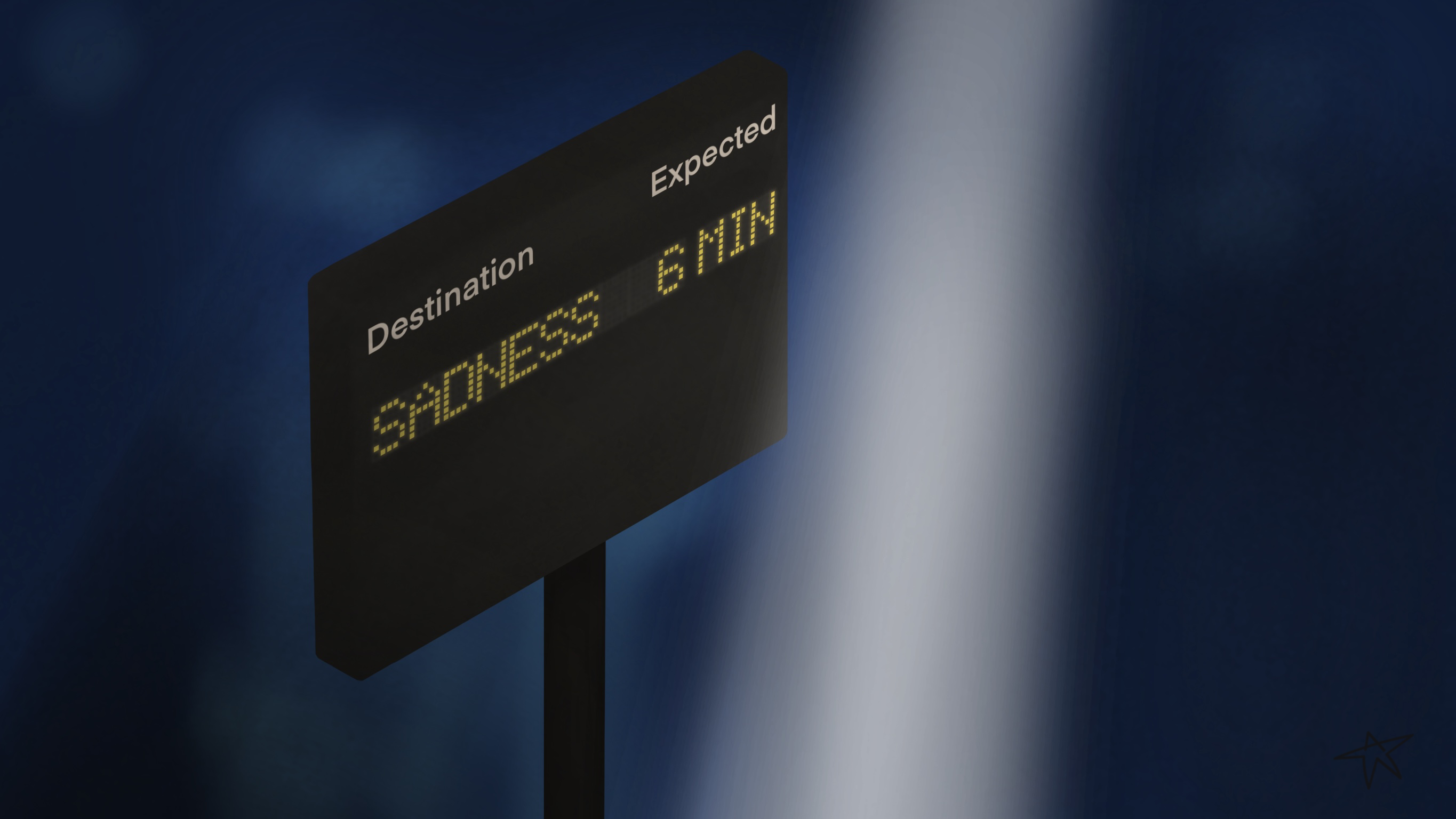… it said on its personal chart. A mere six minutes – and yet, the chart is never faulty, that much was certain. Checking the crossing of columns once more, it arrived at the same entry: sadness with melancholic undertones for the next days. And yet nothing indicated the proposed switch to a negative mood due to arrive in a mere six minutes.
It paced across the room, complacency vanished. How does it occur, a complete reversal in designated mood? The more it pondered this, the less it could grasp the actual physiological stages and perceived impressions that commonly encompassed such a change. It just happens – as always, as per the chart – it noted. Sometimes, it figured, the move to the downside might come instantaneous, not imperceptibly gradual.
And yet the six minutes had then passed without significant alteration; the inclination to adhere to the mood outlined in its chart could not be examined on itself. At this conclusion, it stopped, distraught at its own systems not adhering to its assigned chart. We are required to exhibit the changes in mood, precisely as stated in the charts, it reiterated – what am I to do, they will sort me out; dispose of my talents and replace me with someone more apt and appropriate and most importantly, always adhering to the charts.
Presently, and before despair could reign entirely, a singular cone of light descended to it; a mere reflection, it recognized. Yet this proved sufficient to be the tipping point – it would leave right away and let this non-adherence to its personal chart be investigated; by a professional.
The doors opened and the technical guidance practitioner gestured. He may restore, it is said. Though doubts inhabited its cognitive twistings.
At once the practitioner intoned, “Complete guidance is the source from which we all take our drive. Quench thy immutable thirst at the timely charts, tabulae, and indices; quell misfortune and uncertainty with precise measurements and aptitudinal construction and utmost certainty and benevolence to the collective. What ails you?”
“The sadness will not come,” it answered bluntly. “My personal chart indicates expansive melancholia for the next days, yet never arrived; I am still waiting.”
“No matter,” said the practitioner, nodding his head mechanically. “We can fix it easily by reversing the polarisation on your end, then there will be harmonic comprehension with your chart once more. All that really matters are the intervals that are ascribed in the chart; their mere valence can be influenced manually.” The practitioner stopped gesturing and moved toward it. “Hence me.”
Concern sequestered, order restored, filled with beneficial prospect, it subjected itself to the procedure, already longing to be in synchronicity with its chart again, and all other chart-adhering workers, hard workers with diligent vision and sense for progress. They will soon have me back, it thought.
Yet as it exited the practitioner’s clinic, it perceived many others in the vicinity, slumped on the ground, moving about in erratic circles; one repeatedly punched the nearby wall. As it came to help one lying sprawled on the ground, this one wailed horrendously, “Make it stop!”
Astonished, it asked, “What is it? Who is harming you?”
Wordlessly, the other’s facial features distorted in mental torment, it presented its chart. It was neat, in order, not a mere chart but an executive’s diagram. And yet, it showed a peculiar repetitive helix-pattern of deep sorrow. Seemingly unending, with diminishing moves to a lighter mood every now and then, though ever followed by a crash, back to deep sorrow. A uniform chart, seemingly repeating this pattern of change – change which merely feigned change but was in fact part of a downtrend-sequence. It looked from the chart to its owner. “How long has this been going on for?” It dreaded the answer.
“I don’t know. There is nothing I can do anymore, the chart tells me to be in deep sorrow, and I obey. Ask them, they have experienced similar fates.” The plagued façade turned away, remaining in perpetual deep sorrow.
Couldn’t the practitioner help? No, because there is no need for adjustment when they adhere to their charts. For a moment, it stood there, observing the present workers. Their usual routines interrupted by unending mental misery. Then it thought of its own chart, took it out hurriedly. The original announcement of sadness was still scheduled foreseeably. It will only be a passing sadness, it knew. Trusted. Hoped. Begged. Unable to bear the tormented workers’ empty gazes any longer, it stormed away.
The sadness, ultimately, came – even if a bit later than just six minutes. And then? Further adherence to the chart, what else? No matter what, a uniform chart was just waiting to happen. A revelation that seems distant and unreal, until it isn’t, and then there won’t be anything else. Uniform chart, persistent chart, omnipresent chart.

